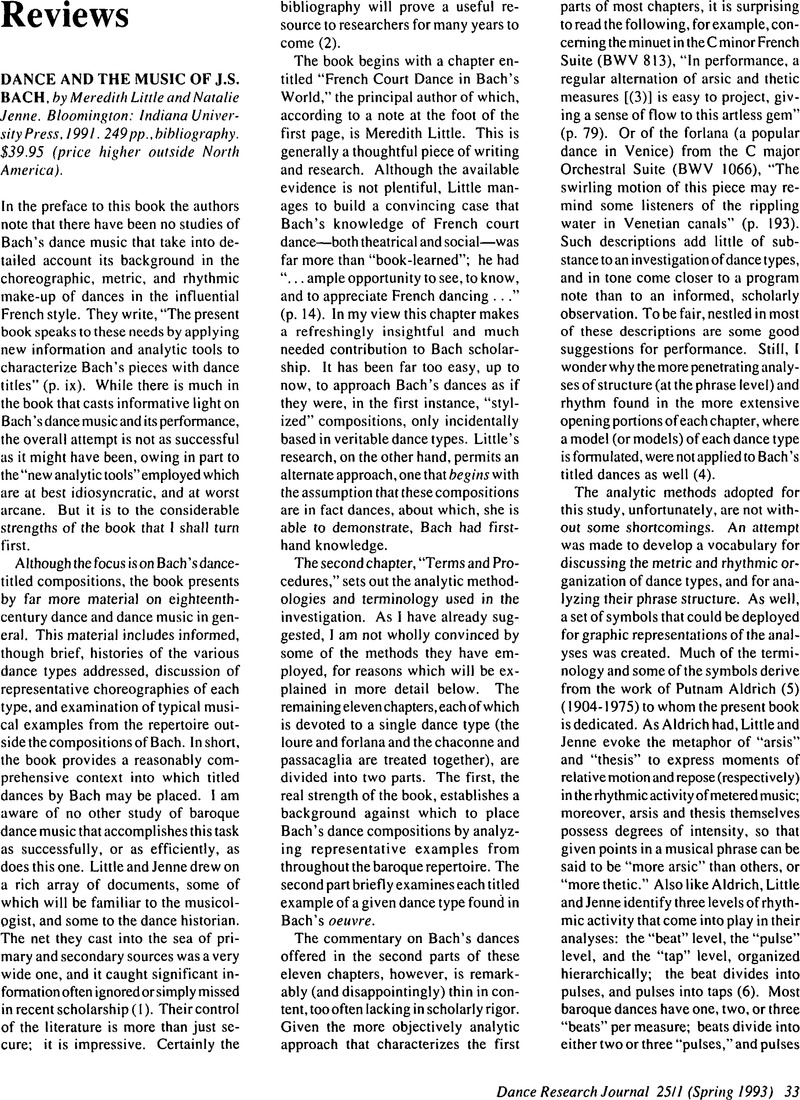No CrossRef data available.
Article contents
Dance and the Music of J.S. Bach, by Meredith Little and Natalie Jenne. Bloomington: Indiana University Press. 1991. 249 pp., bibliography. $39.95 (price higher outside North America).
Published online by Cambridge University Press: 22 July 2014
Abstract

- Type
- Reviews
- Information
- Copyright
- Copyright © Congress on Research in Dance 1993
References
Notes
1. For example, reference is made to a little-known 1705 treatise by Johannes Pasch (1653–1710), titled I.H.P. Maîne de Danse, Oder Tantz-Meister. See p. 14 and note 21. This item was not included in the very comprehensive annotated bibliography of Schwartz, Judith L. and Schlundt, Christena L., French Court Dance and Dance Music: A Guide to Primary Source Writings (New York: Pendragon Press, 1987).Google Scholar
2. Although I noticed that one item referred to in note 4 of chapter 12—Sulzer, Johann George, Allgemeine Theorie der schöner Küinste, 4th ed., 4 vols. (Leipzig, 1792–1794 [sic, actually 1792–99])—was not included in the bibliography. There may well be other omissions.Google Scholar
3. The concept of ‘arsis’ and ‘thesis’ as used in this book will be touched on briefly below.
4. A symptom of the dichotomy between the more extensive treatment of generic dance types and the rather cursory discussions of Bach's works can be seen in the book's musical examples. There are but a handful of brief examples from Bach's music, while there are literally dozens of examples of music by other composers.
5. Principally in his Rhythm in Seventeenth-Century Italian Monody (New York: Norton, 1966).
6. The analagous terms used by Aldrich, are ‘measure,’ ‘beat,’ and ‘pulse.’ See Rhythm, pp. 16–18.Google Scholar


